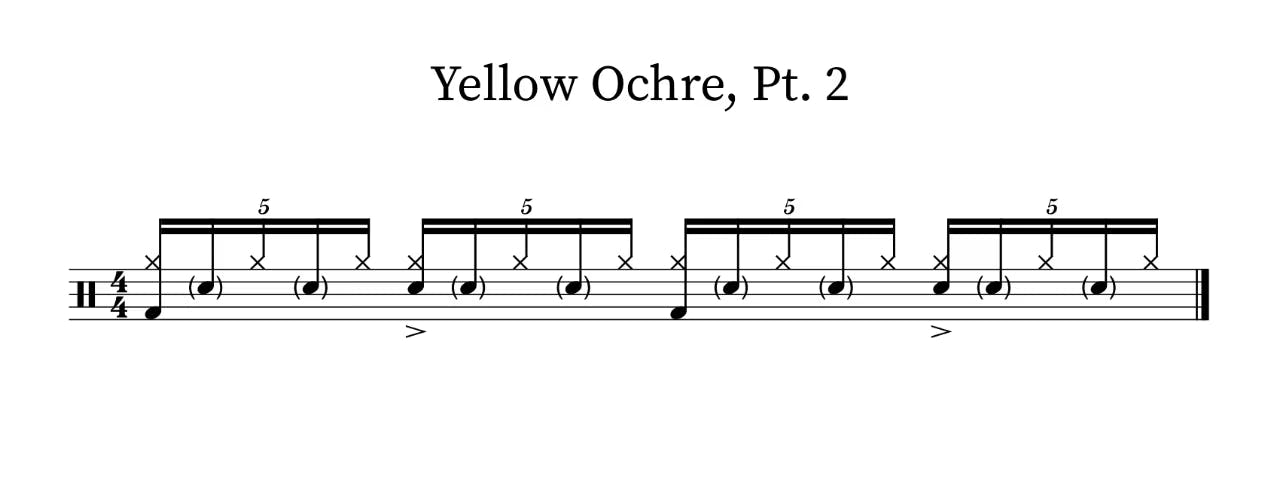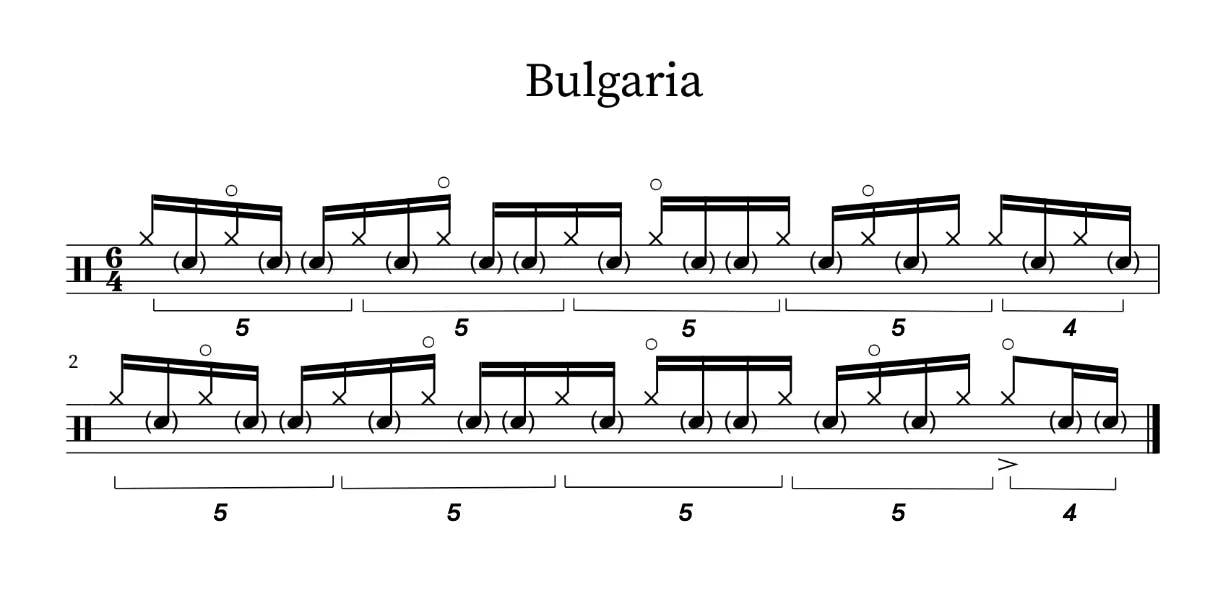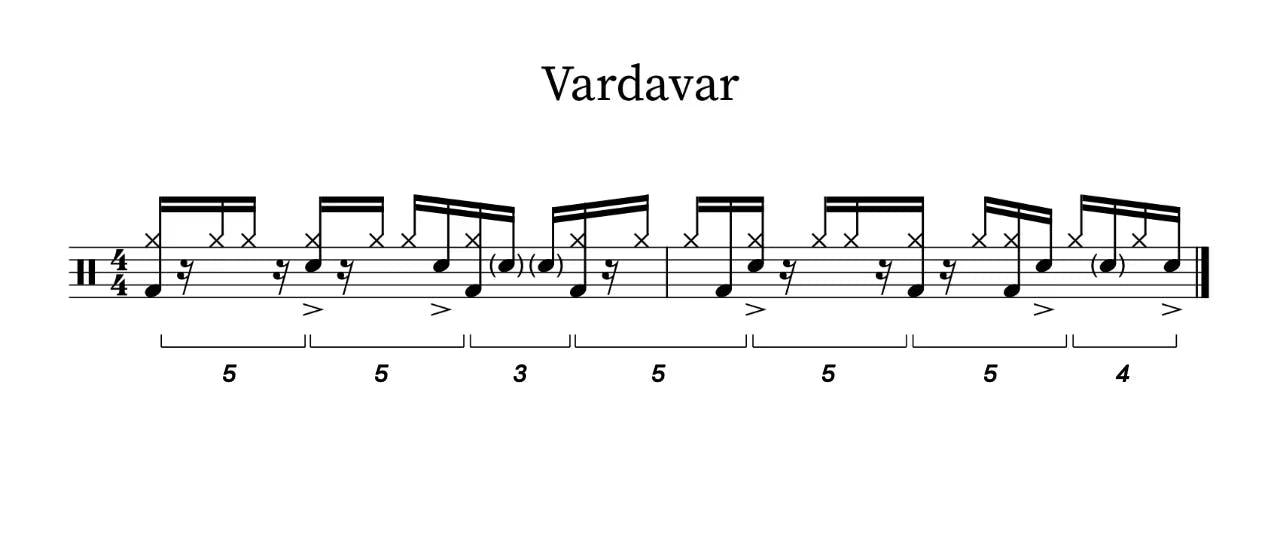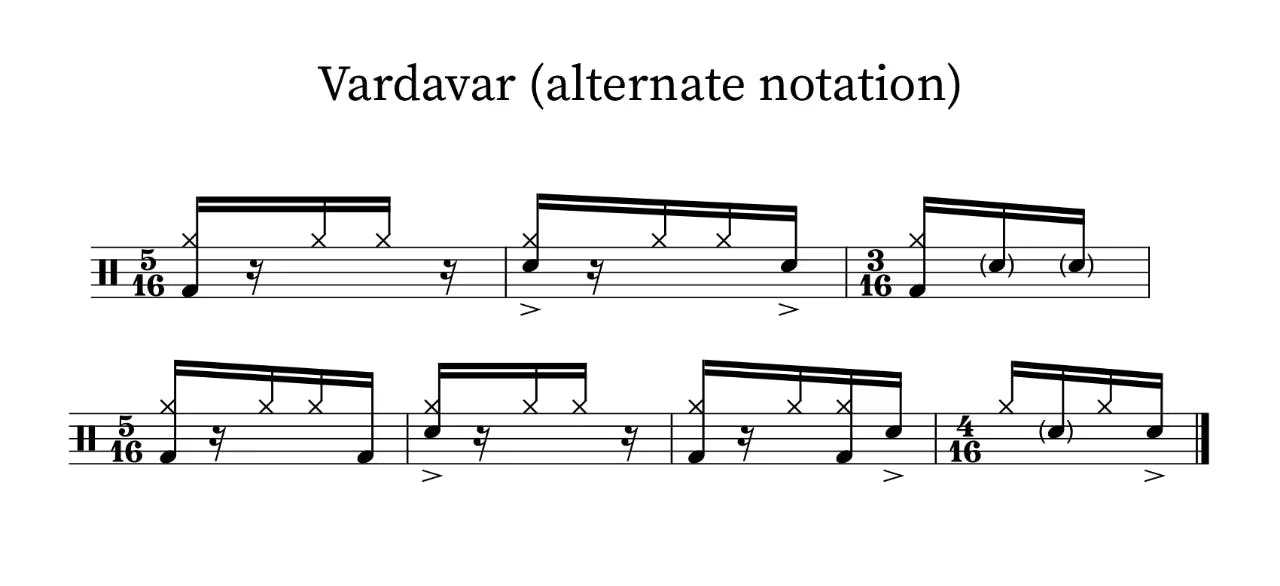
Welcome to Mixed Bag, a series of musings on drums/rhythm that might not necessarily relate to Sensory Percussion, but we think are worth sharing nonetheless. For our third installment of the series, we're going to demystify how "fives" are used in music and look at some real-world musical examples.
Make sure you check out the previous installments if you missed them: The Rhythmic Worlds of Bembé and Recreating J Dilla's 'Fall In Love' With Sensory Percussion
What's The Big Deal About 5?
We often default to counting things in groups of 5, 10, 50, 100, and so on. It comes naturally and makes sense to do so. But in (Western) music--particularly when it comes to rhythm--five is often seen as scary or weird. You might even say it's "odd". Nice, even groups of 2, 4, 6, or 8 are usually pretty easy, but as soon as you throw five in the mix, things get more complicated. It's this added complexity that fascinates some musicians and frustrates others.
There are several ways to incorporate fives into your playing. Most often, we think of five as a time signature, but you may also have heard of quintuplet swing, which has become very popular among drummers in recent years. There are also plenty of well-known grooves that include triplet or sixteenth note subdivisions in groupings of five.
5 As A Time Signature
15 Step - Radiohead

Usually, when someone says a piece of music is "in five," this is what they're referring to: 5/4 or 5/8 time, meaning there are 5 beats per measure. Probably the most well-known example is Dave Brubeck's "Take Five," but we wanted to take a look at a more modern example: Radiohead's "15 Step".
The programmed drum part is constantly changing and can be a bit confusing, but the pattern that drummer Phil Selway plays is actually pretty straightforward and constant throughout the song: kick on beats 1 and 4, snare accents on the "and" of 2 and 5. Often, songs in 5/4 or 5/8 can feel overly technical or hard to dance/sing to, but "15 Step" is an exception and, in our opinion, a modern classic.
5 As A Subdivision
Vels Trio - Yellow Ochre, Pt. 2

Now we're getting into the difference between 5 as a time signature and 5 as a subdivision. This example is in 4/4 time, but each of those four beats per measure is subdivided into five partials. Usually, when subdividing a beat, the options go from triplets (3) to sixteenths (4) straight to sextuplets (6) and skip over 5. However, in large part thanks to J Dilla's contributions, quintuplet and/or septuplet subdivisions are having a bit of a moment right now.
So let's break down the drum groove in "Yellow Ochre, Pt. 2". Of the five partials in each beat, the hi-hat plays the 1st, 3rd, and 5th. The quick turnaround between the 5th hit of one beat and the 1st hit of the next beat is sortof a modern take on the "skip beat" in the classic jazz ride pattern. Apart from the quintuplets, this groove is pretty simple: kick on 1 and 3, snare on 2 and 4 (plus some very subtle ghost notes between accents), with a slight variation every four bars to lead in to the next section.
The "Yellow Ochre, Pt. 2" drum part hopefully makes it clear that the rhythmic subdivision of a groove and the time signature of that groove are independent of each other. This particular beat is in 4/4, but you could also have quintuplets in 5/4 if you want to really max out the "five-ness" of a groove. "Take Five," which we mentioned earlier, is written in 5/4, but like most swing tunes, the beats are felt in triplet subdivisions.
5 As A Grouping
Bulgaria - Peter Erskine

There's one other way to get some of the added spice of fives into a groove without odd time signatures or odd subdivisions, and that's by playing a traditional triplet or sixteenth note subdivision in groupings of five. A great example of this is Peter Erskine's composition "Bulgaria". This piece is in 6/4 and the drum groove follows the rhythm of the main melody.
To see how the groupings of five work, let's do some quick math. The groove is sixteenth-note based, and there are 4 sixteenth notes per beat and six beats in a measure, so that totals 24 sixteenth notes per measure. Normally, these would be broken up into groups of 4 or 6, but this groove (and melody) uses a repeating figure that's 5 sixteenth notes long. This five-note figure is repeated four times. 5x4=20, so that leaves 4 notes. These last four notes act as a sort of "turnaround" that brings the groove back to the downbeat of the next measure. So the rhythmic grouping, as labelled above, is 5-5-5-5-4.
Melodically, this turnaround is the only deviation from the two pitches in the repeated five-note figure. Erskine plays different variations of this groove throughout the tune, but almost always emphasizes this repeating five-note pattern. When he does finally switch to playing straight quarter notes, the band stays on the five-note pattern, creating an interesting contrast in which it almost sounds like they're off from each other until they land right back on the 1 together at the end each phrase.
The Gray Area
Vardavar - Tigran Hamasyan

For our last example, we're going to look at a tricky groove featuring Sunhouse artist Arthur Hnatek on drums: Tigran Hamasyan's "Vardavar". Like the "Bulgaria" groove, this one takes a little bit of math to understand. As notated above, it's a two bar phrase in 4/4 time played in sixteenth note subdivisions. 16 notes per bar for two bars gives us 32 notes total. Typically, these 32 notes would be played in groups of 2, 4, 6, or 8, but this is not a typical groove. Instead, it has two groupings of 5, then a grouping of 3, then three more groupings of 5, followed by a final grouping of 4. 5+5+3+5+5+5+4=32. This is particularly tricky because the third grouping of 5 goes over the barline, making it difficult to hear the overall 4/4 pulse.
So, even though it sounds like some complicated time signature, it's really just 4/4 with odd groupings. Easy, right? Well, maybe not. This is where we start to get into a gray area and music nerds start to argue. Because you could notate each grouping as its own bar in that given time signature, like so:

If you played this groove note-for-note as written, it would sound exactly the same as the one above; it's just a different way to think about it. So, which way is preferable? That's up to you. In this example, we think it helps to hear the overall 4/4 pulse, even if the accents don't line up with it.
But this gets to the larger lesson we hope you take take away from this post: it's more important to feel the time and be able to play/sing along with the music than it is to be able to intellectualize it. We're guessing that none of the drummers on any of these four featured tracks were counting "1, 2, 3, 4, 5" over and over in their heads as they played these songs. They probably just practiced the groove until they could feel it without thinking about it. So, hopefully this inspires you to do the same, or maybe even spice up your own grooves by adding in some fives!
